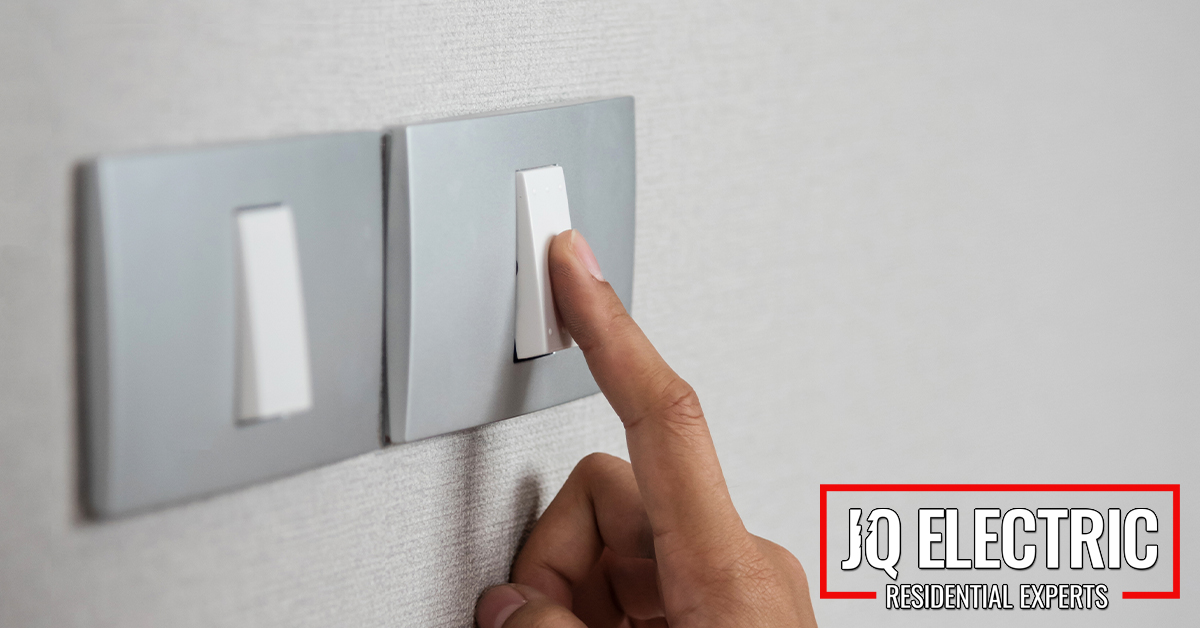
Light switches have an important job – to turn on or off the lights. But besides lighting up the room, there are various types of light switches. Each switch serves a different purpose.
1. Single-Pole Switches
A single-pole switch is one of the most common types of light switches used in residential electrical systems. It is a simple on/off switch that controls the power flow to a single lighting fixture or electrical outlet. The term “single-pole” refers to a switch with only one set of electrical contacts.
2. Three-Way Switches
A three-way switch is an electrical switch used to control a light fixture or electrical outlet from two different locations.
3. Four-Way Switches
A four-way switch is another type of switch used. With two three-way switches, it controls a light fixture from three or more locations. This adds additional switching points beyond the two provided by the three-way switches.
4. Toggle Light Switches
The toggle light switch is the standard on/off switch with a toggle lever. This configuration is the most common switch that people tend to think of when imagining a light switch.
5. Rocker Light Switches
The rocker switch is similar to a toggle switch but with a flat, rectangular rocker. This switch has the same function as a toggle switch but is more decorative and modern.
6. Push Button Switches
You can activate this switch by pushing a button rather than toggling to turn a light on or off. Otherwise, this light switch offers the same function as the toggle and rocker light switches.
7. Dimmer Light Switches
A dimmer is more versatile than most switches, allowing on or off functions. A dimmer switch allows you to adjust the brightness of the light. This feature can create more range in lighting for different atmospheres. You would install this switch the same way as traditional switches.
8. Smart Light Switches
You can remotely control this switch with a smartphone or smart home system. These switches can provide added safety as an illusion of being home when you are not. You can also turn lights on or off remotely if you have forgotten to do so after leaving.
9. Motion Sensor Switches
Motion sensor switches are also known as occupancy sensors. These switches automatically turn lights on or off based on motion detection. The lights turn on when it senses a person enters the room. The lights then turn off if no further motion is detected. These can be great for saving some electricity.
10. Timer Light Switches
Timer switches allow you to set specific times for lights to be on. You turn the knob or push the buttons to your desired time indicated to operate. The lights will then shut off after the clock runs out.
11. Combination Switches
Combination switches can combine multiple switches in a single wall plate. An example could be a toggle and dimmer. But they can also combine a switch and an outlet.
Light Switch Safety
These are just some common types of switches, and there may be variations and specialized switches depending on specific needs and technologies. Before you replace or install a light switch, it is essential to match amperage and voltage. Therefore, having a certified electrician make these modifications is always best. If you want to learn more or install any of these light switches, JQ can help you find what you are looking for and install it for you. Give JQ a call today!
